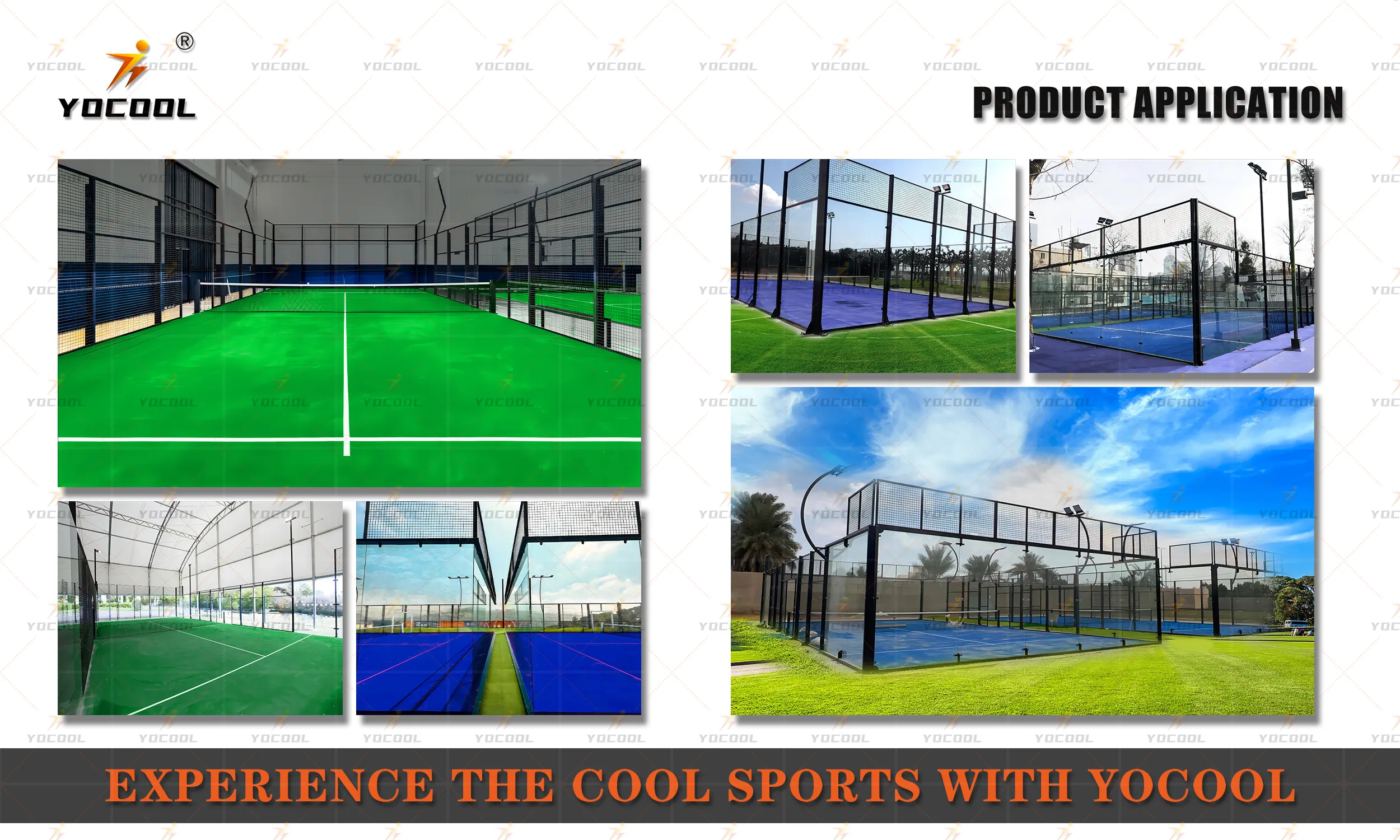

The Structure of a Padel Court An Overview
Padel is a dynamic and rapidly growing sport that combines elements of tennis and squash. Its increasing popularity can be attributed to its accessibility, social nature, and emphasis on skill over brute strength. Central to the game is the court itself, which has a unique structure that differentiates it from traditional tennis courts. Understanding the design of a padel court is essential for players, enthusiasts, and those involved in its construction and maintenance.
Dimensions and Layout
A standard padel court measures 20 meters long and 10 meters wide, making it smaller than a tennis court. This compact size promotes quick exchanges and a faster-paced game. Moreover, the court is enclosed by walls on all four sides, which play a crucial role in gameplay. The walls are typically made of glass and are about 3 meters high on the sides and 4 meters high at the back. This height allows players to use the walls strategically, adding an extra dimension to their shots.
Surface Material
The playing surface of a padel court is usually made from synthetic grass or artificial turf, similar to that used in soccer. This surface not only provides good traction and comfort but also allows for the required bounce for the ball. Additionally, some courts may feature sand-filled surfaces that improve ball stability and enhance player movement. The choice of surface can significantly affect gameplay and player experience, making it crucial for courts to be constructed with quality materials.
Net and Equipment

At the center of the court is a net, which is 0.88 meters high in the middle and 1.0 meter high at the ends. The net divides the court into two equal halves and is a vital component of the game. Players must learn to effectively use the space above the net while managing their positioning on their own side. Padel rackets, which are solid and perforated, along with a specific type of ball, further distinguish the sport from its tennis counterpart.
Lighting and Ventilation
Proper lighting is essential for indoor padel courts. The layout typically includes overhead lights that provide adequate brightness for both recreational and professional play. Ensuring that there are no shadows on the court is crucial for maintaining an effective game environment. For outdoor courts, natural lighting is beneficial, but it is important to consider elements such as wind and sun exposure when designing the overall layout.
Social Spaces
Interestingly, one of the most appealing aspects of padel is its social nature. Many padel facilities incorporate additional spaces such as lounges, cafes, or viewing areas adjacent to the courts. These areas allow spectators to enjoy games and help foster a sense of community among players, making padel a lifestyle choice rather than just a sport.
Conclusion
In summary, the structure of a padel court plays a pivotal role in shaping the game’s dynamics and overall experience. From its unique dimensions and surface material to the essential net requirements and social spaces, each aspect contributes to what makes padel an exciting and engaging sport. As the popularity of padel continues to expand globally, understanding its court structure will be fundamental in promoting its growth and enhancing player enjoyment.
Durable PVC & Rubber Sports Floors Slip-Resistant & Shock-Absorbing
Rubber Brick Flooring Durable, Slip-Resistant & Eco-Friendly Solutions
Premium Rubber Floor Mats - Slip-Resistant, Durable & Easy Clean
Premium Rubber Floor Mats Durable, Slip-Resistant & Easy to Clean
Homogeneous Transparent Rubber Flooring Slip-Resistant & Low Maintenance
Homogeneous Transparent Flooring Slip-Resistant & Durable Rubber Floors